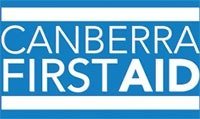Dr Peter Taylor’s dedication to volunteering, including Marine Rescue NSW, earned him a prestigious award in 2016 – Marine Rescue NSW Officer of the Year.
The Greenwell Point resident is now encouraging others to nominate someone they think is worthy of a similar Rotary NSW Emergency Services Community Award.
Now in their third year, the awards are an initiative of the Rotary Districts and Clubs of NSW to acknowledge and celebrate the achievements of emergency services personnel across the state.
The awards are open to all emergency services personnel from the six official NSW emergency services agencies, including Fire and Rescue NSW, Marine Rescue NSW, NSW Ambulance, NSW Rural Fire Service, NSW State Emergency Service and NSW Volunteer Rescue Association.
Peter has been involved in volunteer work for more than 40 years.
He first volunteered with the SES in Rockhampton in the mid 1970s and was the SES volunteer medical officer for seven years.
After moving to Greenwell Point in 1998, Peter became involved with Marine Rescue, taking on many roles from rescue Coxswain to First Aid Trainer.
Since then, he has trained hundreds of Marine Rescue volunteers in first aid and is a regional First Aid Trainer and Assessor.
“While I may have received this award, none of us could do it without our supportive partners.
After taking a moulage (injury makeup) course, Peter has seen many changes in the way first aid is taught and delivered.
“Our team makes casualties up as realistically as possible now so the people who do our first aid courses experience how it’s going to be in a real life situation,” Peter said.
“We even teach our first aid casualties to groan and act as realistically as possible.
“During the very first course we ran one of the neighbours called the cops because they saw someone staggering around bleeding and groaning – the neighbours know now.”
At 74 years of age Peter said his joints are slowing him down now but he spent many years going to sea with Marine Rescue.
While he’s had some hairy times at sea, there’s always been someone there to support him on return – his wife Helen.
“While I may have received this award, none of us could do it without our supportive partners,” Peter said.
“They’re always there, worrying and waiting for you to get home safely.”
Peter also credited the radio operators for their crucial efforts in all rescues.
The humble award recipient said receiving the Rotary honour in 2016 was a win for the entire Shoalhaven Unit.
“My award reflects on my Unit, without those people who I’ve been associated with over 18 years, I couldn’t have done the things I’ve done,” he said.
“Marine rescue is out there in the middle of a storm and no-one sees the work that’s being done. You get back and you’re cold and you’re tired, but it’s also dangerous and phenomenally exciting.
“When you’re in Marine Rescue you are, to some degree, invisible.
“Marine rescue is out there in the middle of a storm and no-one sees the work that’s being done. You get back and you’re cold and you’re tired, but it’s also dangerous and phenomenally exciting.”
“If you want to have a crack at something for the community, don’t forget Marine Rescue.”
With award nominations now open, Peter encourages everyone to look at people in the emergency services who have gone beyond the call of duty, both in and outside their Units.
Peter himself is also involved with Greenwell Point Men’s Shed, Chairs the Greenwell Point Memorial Community Hall Committee and is an Ambassador for the Rotary supported DreamCricket program, which gives children with any form of disability the opportunity to use cricket based activities to build skills and self-confidence.
Members of the public and emergency services workers are encouraged to submit online nominations for the Awards. Nominations close on Friday, May 19.
A panel of independent judges will assess nominees on three key criteria; community service above and beyond the call of normal duties, which best exemplifies Rotary’s motto of ‘Service Above Self’, personal attributes and contribution to their organisation.
Funds raised through the awards support the Australian Rotary Health PhD Research Scholarship into Post Traumatic Stress Disorder in emergency services personnel.


























/public-media.smithsonianmag.com/filer/a0/57/a0577cf1-541f-4e56-8a60-3fcd4f526388/gale-19labs-image.jpg)
